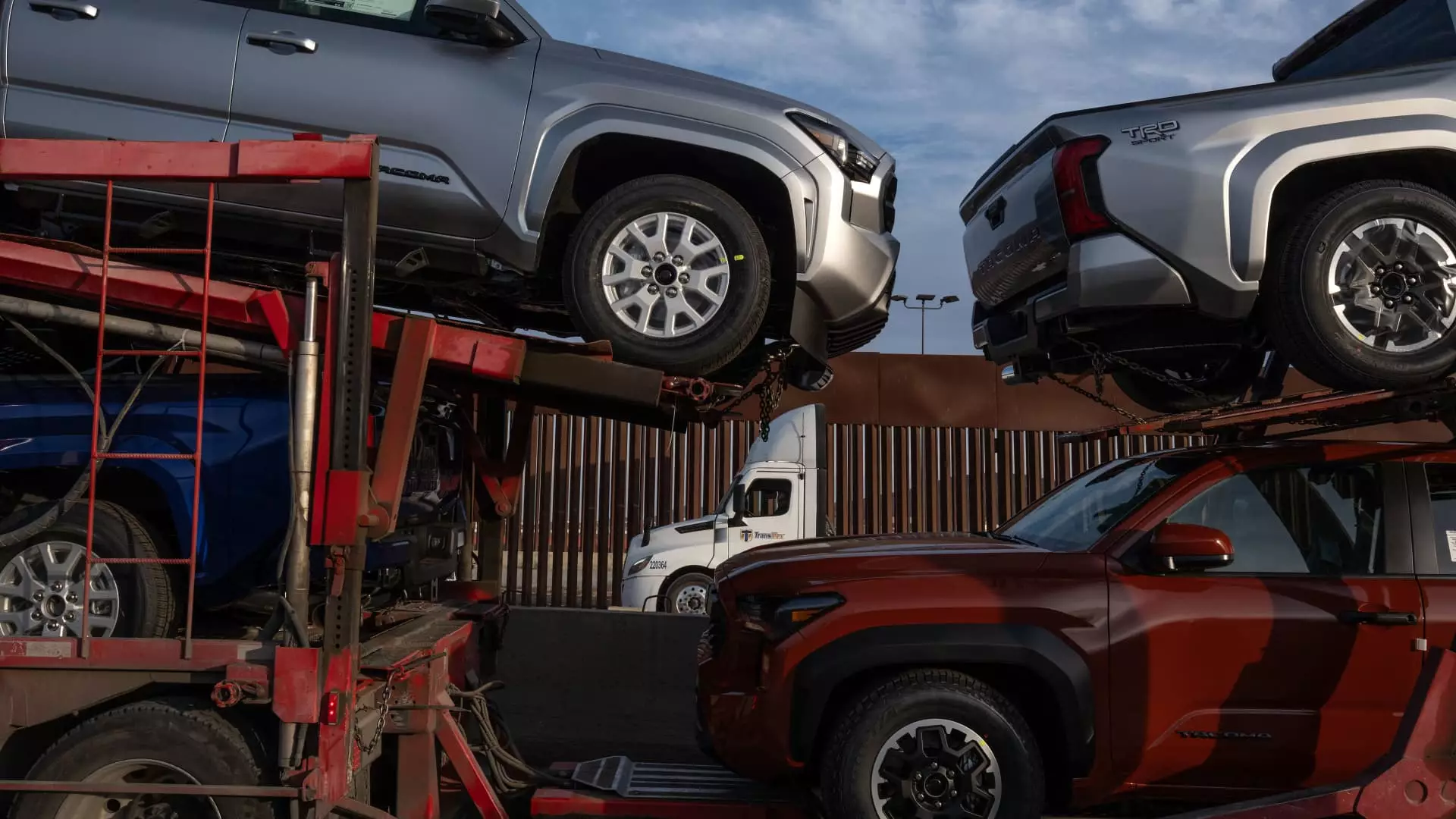As President Donald Trump inches closer to enforcing potentially severe tariffs of 25% on imports from North America’s two primary trading partners—Canada and Mexico—the global automotive sector finds itself in a precarious situation. Automakers, accustomed to the intricate web of trade and production that defines modern manufacturing, are now grappling with an uncertain future as they brace for the financial implications of these tariffs. For months, the industry has adopted a “wait-and-see” stance, hoping to navigate the volatile waters of American trade policy.
The discussions surrounding tariffs began with Trump’s bold pledge during his presidential campaign and were quickly followed by vague timelines suggesting imminent action. Set against the backdrop of a rapidly changing global economy, the promise of tariffs has ignited anxiety among automotive leaders, notably General Motors (GM), which dominates U.S. automotive sales. For these companies, clarity is paramount in formulating effective business strategies. The looming tariffs, if enacted, could dramatically elevate costs across supply chains, forcing companies to either absorb increased expenses or, more likely, pass them on to consumers—ultimately driving up vehicle prices and stifling demand.
The uncertainty surrounding tariffs appears to have already influenced GM’s stock performance, which plummeted significantly even after the company released positive earnings reports. Analysts highlighted that despite GM’s optimistic outlook for the next few years, U.S. trade policies cast a long shadow over its future. Barclays analyst Dan Levy pointed out that while GM has compelling opportunities ahead, it must also navigate this tumultuous environment that is rife with unpredictability.
Furthermore, GM’s leadership has taken a cautious approach. CFO Paul Jacobson acknowledged that the potential impact of tariffs was not factored into the company’s financial guidance—an acknowledgment that signifies hesitance and tentativeness in the face of policy uncertainty. He succinctly summed up the sentiment within the organization: “There’s just so much noise.” This statement underlines the complexity and confusion that surround the ongoing discussions on tariffs. Moreover, external factors like natural disasters further complicate the landscape, distorting key market indicators.
The auto industry operates on a model that thrives on cross-border manufacturing and collaboration. Consequently, imposing blanket tariffs on Canadian and Mexican imports would have widespread repercussions. According to S&P Global Mobility, virtually every player in the field—manufacturers and suppliers alike—would feel the brunt of these economic policies. The interdependence between U.S. automotive companies and their manufacturing partners necessitates a delicate balance. A shift in tariffs could disrupt this balance, affecting production timelines and costs.
Major automakers have developed extensive operations across the U.S.-Mexico-Canada corridor. Notably, companies including Ford, Honda, and Toyota maintain multiple facilities in Latin America, heavily relying on parts and finished goods flowing across borders to meet U.S. consumer demands. The mutual dependence is also evident in trade statistics: nearly half of Mexico’s auto parts are imported from the U.S., with an overwhelming percentage of parts made in Mexico sent back to the States. The automotive sector cannot afford the potential cost hikes that tariffs impose, with projections indicating that a 25% tariff on vehicles priced at $25,000 would escalate consumer costs by an alarming $6,250.
Wells Fargo’s analysis of potential tariff impacts further elaborates on the gravity of the situation, estimating that American automakers could collectively shoulder losses that run into the tens of billions. The forecasts predict that GM alone might see an annual score of up to $56 billion in costs should the tariffs be enacted, a frightening thought for stakeholders invested in the company.
As automakers scramble to create contingency strategies in anticipation of potential tariffs, their vulnerability varies significantly. Volkswagen is notably the most exposed, with 43% of its U.S. sales stemming from production in Mexico. This percentage lays bare the risks automakers face—not all companies will weather the storm equally. As industry leaders continue to assess the situation, communication and adaptive strategies remain critical.
The ongoing deliberations about tariffs usher in an era of uncertainty and apprehension for the automotive industry. The interplay of economic policies, production strategies, and market dynamics emphasizes the need for comprehensive planning and adaptability. As the sector braces for potential impositions, the stakes could not be higher for automakers, workers, and consumers alike. The outcome of these tariffs remains to be seen, but their implications will undoubtedly resonate throughout the automotive landscape for years to come.

Leave a Reply